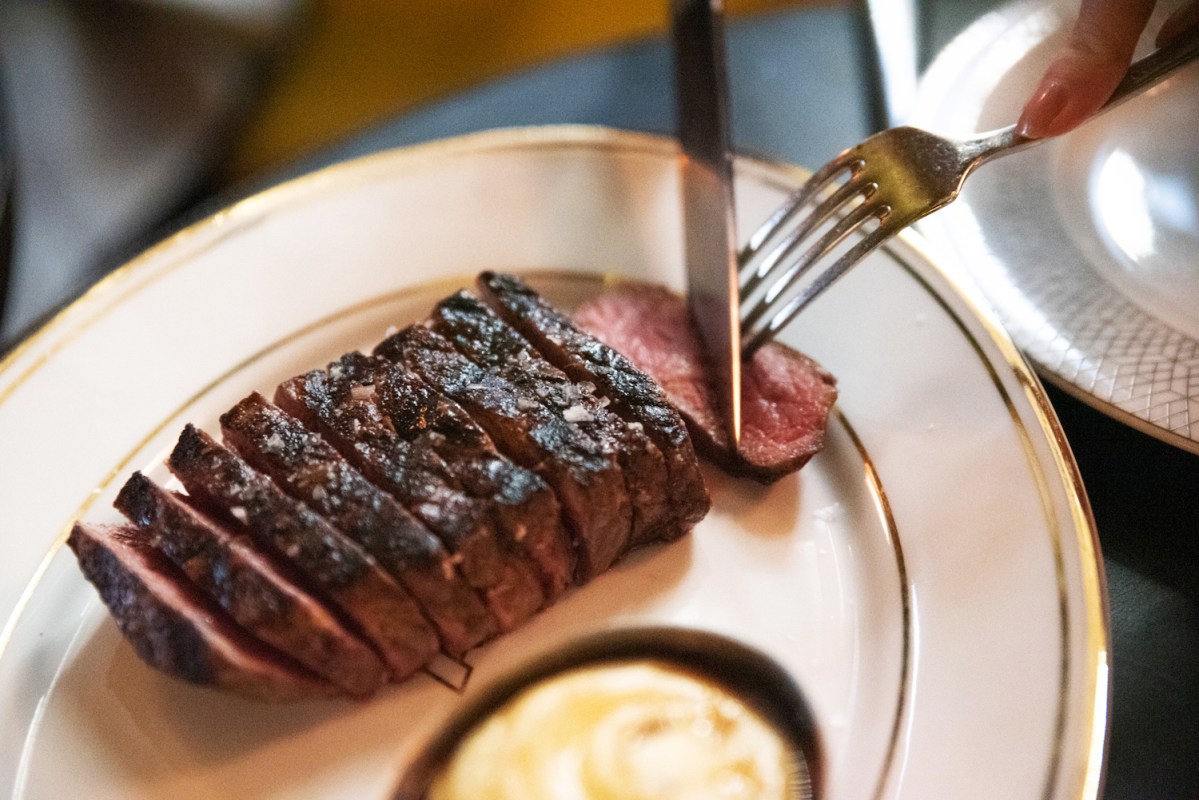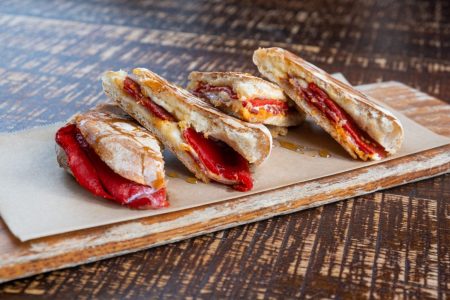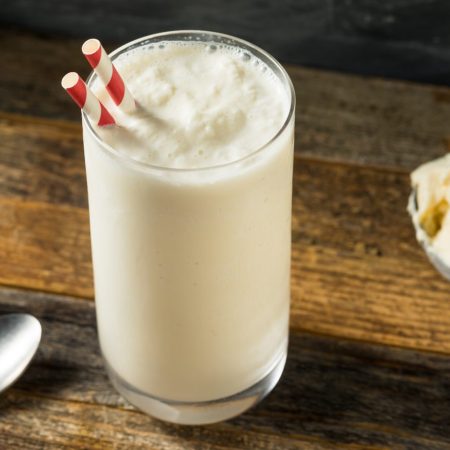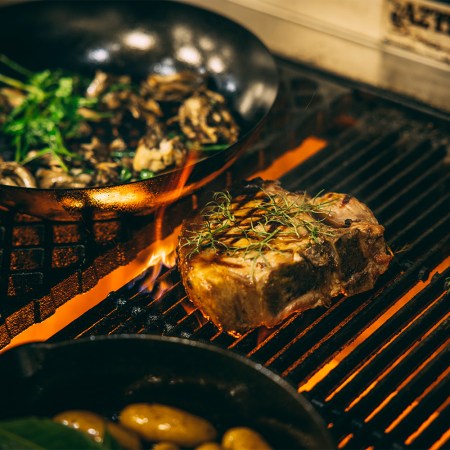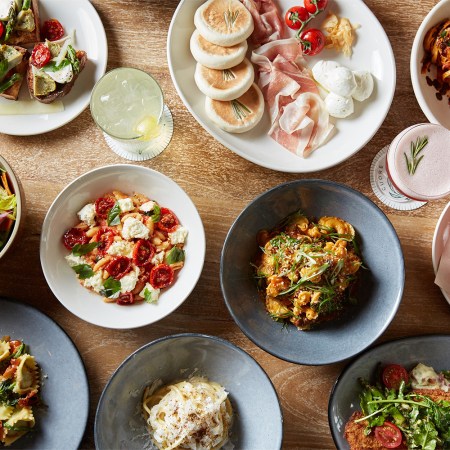Chicago has long been known as a steak capital — from the end of the Civil War, when it became America’s meatpacking hub, to today, when some nearly 2,000 steakhouses dot the city. But these days, Chicago’s steak culture is getting a bit of a glow-up, thanks to the newfound omnipresence of Wagyu.
Wagyu is a beef for discerning steak eaters, but it stands out from Kobe, for example, in referring not to a region but to a breed — or rather, a collection thereof. Four breeds of Japanese cattle encompass the category of Wagyu, the fruit of early 20th-century cross-breeding that, compounded with specific techniques for raising and feeding the animals in a low-stress environment, results in fattier, exquisitely marbled beef.
According to chef John Manion of El Che Steakhouse & Bar, if Wagyu is becoming more commonplace in Chicago, it’s for a variety of reasons. “Virtually every Michelin tasting menu is going to have some kind of A5 Wagyu course — it’s like a box they have to check — so there’s that,” he says. “Second, post-pandemic, people are really into ‘luxury items,’ and wagyu fits the bill.”
And seeing as Wagyu is becoming more and more recognizable as a luxury item, it’s becoming even more widespread. “I believe more people are aware of the product and are more comfortable paying for the higher price tag when they know the quality,” says two-Michelin-star chef Danny Grant of steakhouse Maple & Ash.
And it’s that quality that makes these chefs so excited to feature it on their menus. “I enjoy the way Wagyu eats,” says chef Jenner Tomaska of Michelin-starred Esmé. “The mouthfeel is surreal.”
“The insane marbling and luxury, high quality products make preparation easy for us,” Grant says. “Long story short — it’s fatty and delicious!”
How to Make a Classic Late-Night Barcelona Club Kid Snack at Home
It’s filling, delicious and easy — plus you only need a handful of ingredientsOf course, not all Wagyu is created alike. Japanese Wagyu tends to be more intensely marbled than American Wagyu, which may notably hail from cross-breeds rather than the pure lineage of the original Japanese creation. Proponents of American Wagyu tend to love it for its beefier flavor — and often for its lower price point. Those who love the original, meanwhile, cite its melt-in-your-mouth texture and unctuous fattiness as the reasons people are willing to pay top dollar. And these chefs will go the distance to get Chicagoans the beef they crave. Chef Grant recently took part in an invite-only Japanese auction, allowing him to fly in rare Wagyu from the regions of Ohmi, Kobe and Ozaki. So too did chef Bob Broskey of RPM Steak, which boasts one of the largest Wagyu programs in the city. He recently was able to successfully secure several cuts from the Himeji Kobe Auction, the first time U.S. participants were allowed to partake.
“We stand out because we seek only the best of the best in Wagyu,” Broskey says, citing Chateau Uenae “Snow Beef” from Hokkaido that only 13 restaurants in the United States are authorized to serve. “We are the only ones in Chicago serving it.”
But Broskey also offers a range of American and even Australian Wagyu from Beeman Ranch in Harwood, Texas, and Westholme, respectively. “We have spent years working to cultivate these relationships making sure we only have the highest-quality beef for our guests,” he says.
While American Wagyu has been available for some time, it took the increased availability of top-quality local Wagyu to convince Manion to put it on the menu. “I’ve had guests ask about Wagyu for some time, but it was really meeting Mario from Vander Farms in Michigan that set the wheels in motion,” he says. “I really like the family, the ethos and their mission, so I brought some on and it went very well.”
Lexington Betty Smokehouse executive chef and owner Dominique Leach also opts to source from Vander for her Wagyu offerings, beginning with a burger and finally releasing a 100% F1 American Wagyu hot dog.
Of course, Wagyu is not the best for all dishes. Tomaska eschews it for recipes that call for ground meat, given the high fat content. “The final product tends to break, meaning it has a terrible mouthfeel,” he says.
Broskey also says Wagyu prime rib is a no-no — at least if you’re using Japanese Wagyu, which he says, is “just too marbled to take well to this dish. On the other hand, an American Wagyu like Beeman Ranch is incredible with this slow-cooked method.”
Grant, meanwhile, recommends steering clear of “anything that would be drowning it in assertive, strong flavors. Wagyu is more of a delicate cut that deserves simplicity,” he says. “Braising it would be a sin!”
How These Chefs Enjoy Wagyu
Chef Jenner Tomaska
At Esmé, Tomaska offers two cuts of Wagyu hailing from two very different origins. The picanha features four ounces of Australian wagyu from Sher Farms in Central Victoria, while the ribeye hails from Kusunoki Farm in Japan. His current favorite is the former, which is dry-aged for 60 days and served with white asparagus. “Australian wagyu eats like American beef while still having the nuanced flavor of Japanese products,” he says.
Chef John Manion
At El Che, Manion offers two American Wagyu cuts: a 12-ounce picanha and a 12-ounce bone-in New York strip. He also serves up a luscious steak tartare with shallot, caper, egg yolk and bone marrow aioli, which benefits from the lower fat content of American Wagyu for a truly silky texture.
Chef Bob Broskey
At RPM Chicago, Chef Broskey is currently head-over-heels for the Takamori drunken Wagyu, specifically the flat iron cut. “The cows are fattened using the leftover mash from the Dassai sake brewery, which gives the fat of the animal an incredibly sweet flavor,” he explains. “The flat iron cut we also feel is special and is not utilized by many restaurants in the United States when it comes to Japanese Wagyu.”
Chef Danny Grant
At Maple & Ash, both domestic and international Wagyu are on the menu. “Internationally, we source from Kagawa and Kagoshima in Japan, and domestically we source from Georgia,” Grant says. His current favorite is the latter: a strip steak “simply grilled over an open flame with herbs and garlic, wild ramps, spring vegetables, black truffle puree and our famous beefed-up butter.”
Chef Dominique Leach
At Lexington Betty Smokehouse, Leach is currently gaga over Wagyu beef andouille sausage. “It’s got just the right amount of heat and combines my love of Southern flavors with my signature rib tips,” she says. “I’s a double win.”
Every Thursday, our resident experts see to it that you’re up to date on the latest from the world of drinks. Trend reports, bottle reviews, cocktail recipes and more. Sign up for THE SPILL now.
